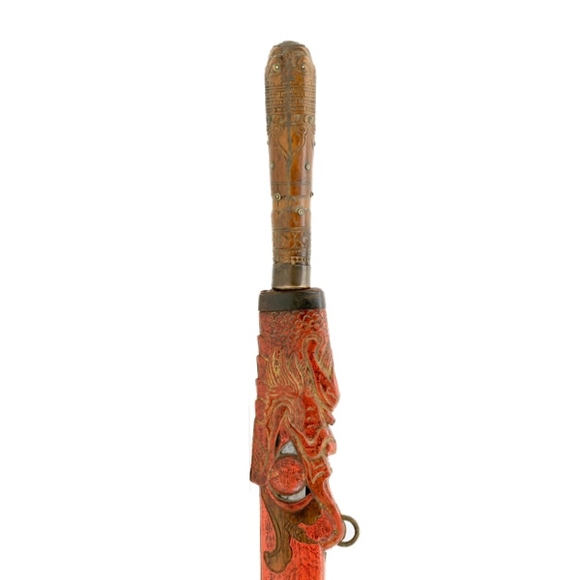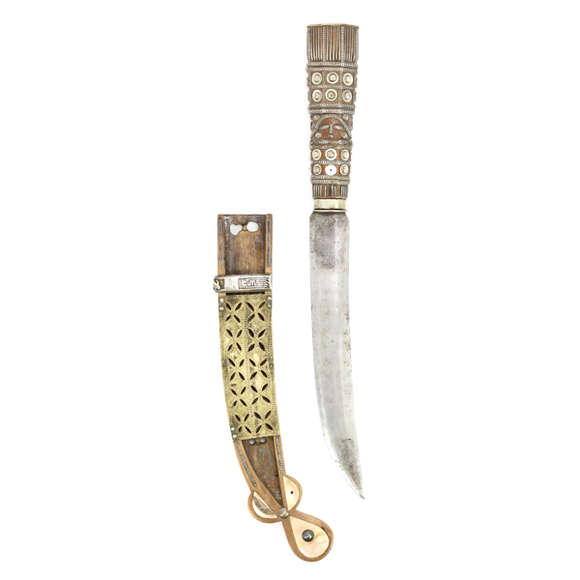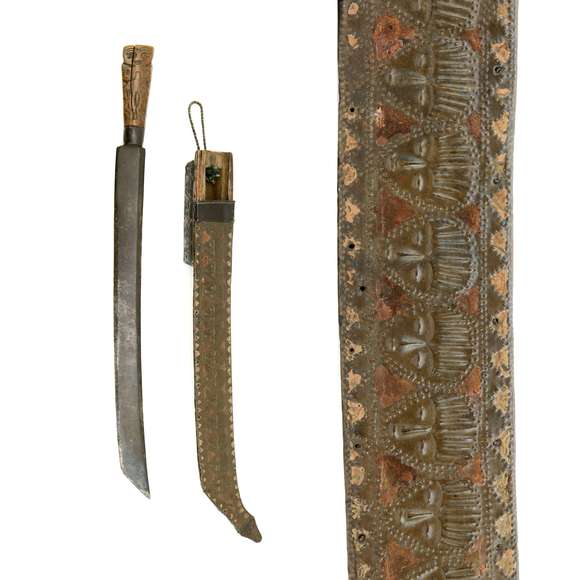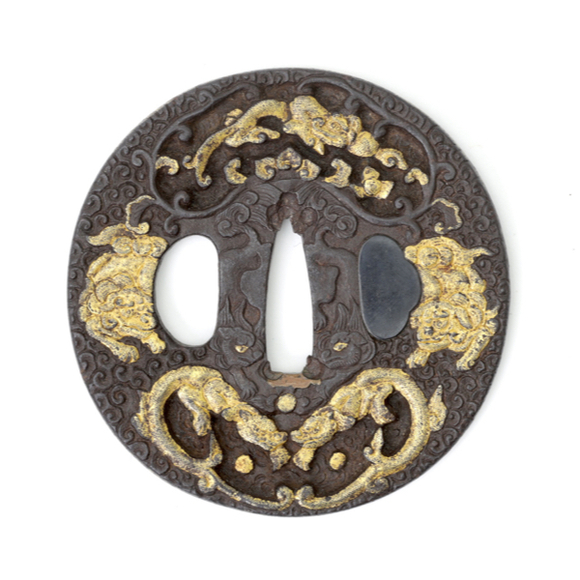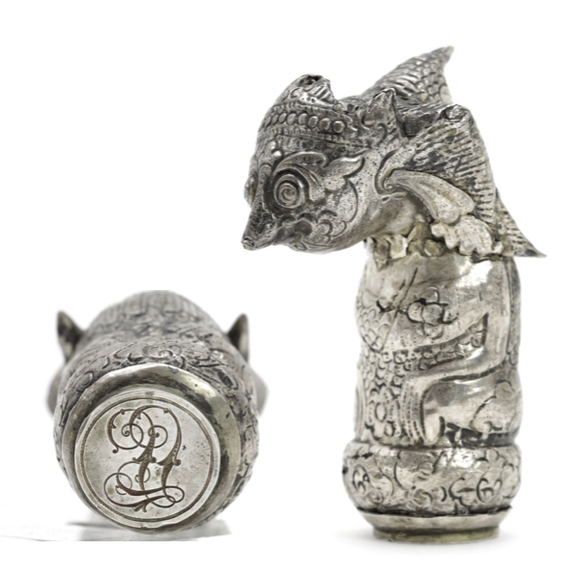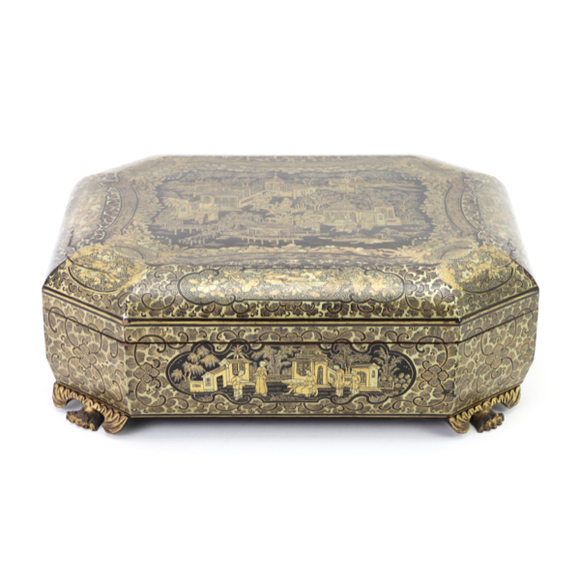With a straight blade of asymmetrical grind and a strongly Chinese inspired scabbard.

68.6 cm
56.8 cm
Base 8.4 mm
Middle 5 mm
5 cm from tip 2 mm
Base 30 mm
Middle 27 mm
5 cm from tip 25 mm
613 grams
16.3 cm from hilt
Iron, steel, wood, brass, silver, pigment
Paiwan people
Southern Taiwan
19th century
UK antique market
Description
A Taiwanese sword with a long blade of asymmetrical cross-section; the left side is flat and the right side has a ridge on the upper portion of the blade. The blade is nearly straight, but has an ever to slight curve to it. The edge is wavy, indicating damage has been polished out on several occasions. It shows a layered structure with an elongated straight grain, and inserted high carbon edge.

The wooden hilt has a brass ribbed ferrule and two sunken areas that are wrapped with silver braided bands, one of them a recent replacement. The hilt's surface is carved with stylized leaves and geometric patterns, executed with considerable precision.
The hilt widens towards the back and is carved with what seem to be four serpent heads, the space between them recessed and lacquered red. The tang is peened at the pommel over a stack of ribbed washers, which in turn hold a larger pommel plate in place with protrusions on four sides, one gone.
Dating/attribution
A very unusual sword that is hard to date and attribute. The blade shape, along with its cross-section, was used by the Paiwan, seen mainly on their tjakit-type shortswords. The overall hilt form also points towards this group. Serpent heads as seen on the pommel end of our sword are also often seen on Paiwan art. They represent the Deinagkistrodon or "Hundred Pacer snake," a species of pit viper that plays a central part in Paiwan mythology and as a symbol was associated with Paiwan nobility. The hilt is decorated with several silver washers nailed to it, a typical Paiwan hilt treatment.
The floral carvings on the hilt are typical for Pinuyumayan work, who were also known to use longer swords like these. The Seqalu, a branch of Pinuyumayan, conquered the southern tip of Taiwan in the past. They have since largely assimilated in the southern Paiwan population, their former vassals.'.1
The brass ferrule and pommel plate are very unusual for Taiwanese swords in general. Such stacked washers at the pommel are typical for work from the coast of Northern Vietnam, and into parts of Southern China. Braided silver wrappings, in turn, are also much more mainland Southeast Asian than they are Taiwanese.
There was a Yunnan/Vietnam to Taiwanese connection: Tang Jingsong commanded the Yunnan Army in the Sino-French War (August 1884–April 1885), fighting alongside Liu Yongfu's infamous Black Flag Army. In 1894, Tang Jingson became governor of Vietnam. Upon the outbreak of the First Sino-Japanese War (1894–95), he invited his old ally Liu Yongfu to assume command of Qing forces in southern Taiwan.
There are some parallels with another unusual southern Taiwanese sword I sold in the past.

Unusual Taiwanese sword with strong Paiwan features.
Sold by Mandarin Mansion in 2020
Notes
1. Alex Cheng and Vincent Tseng, personal communication. Also see A Preliminary Classification of Indigenous Taiwanese Knives.











A fine example with mother-or-pearl decorated hilt and scabbard.
It was collected by Laurens Langewis, an early 20th-century ethnographer and author.
A nice example with unusually fine lacquerwork and a monogram in the lid.

